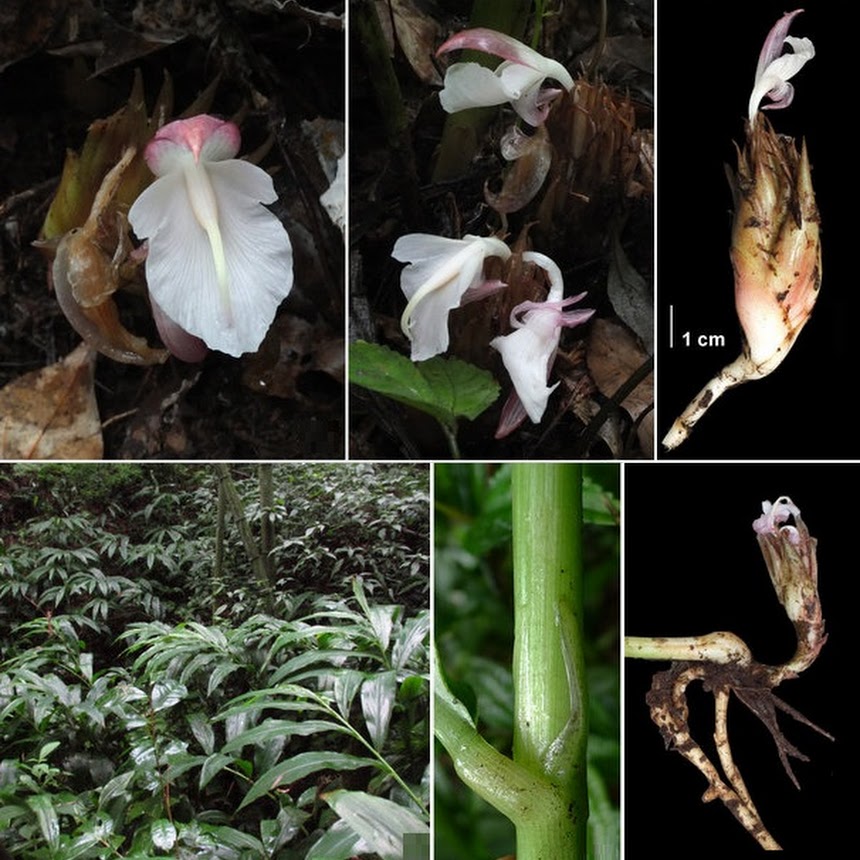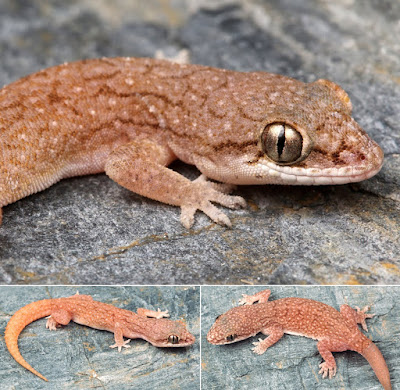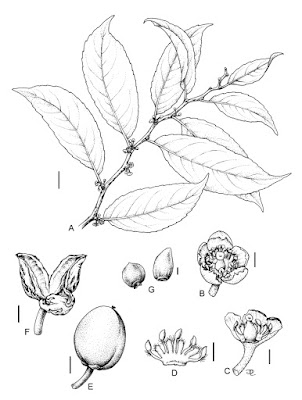[Most Recent Entries] [Calendar View]
Thursday, December 20th, 2018
| Time | Event | ||||
| 1:55a | [Botany • 2018] Zingiber leucochilum (Zingiberaceae) • A New Species of Zingiber with Running Rhizome from Sichuan [Taxonomic Studies on Zingiber in China VI]
Abstract Zingiber leucochilum L.Bai, Škorničk. & N.H.Xia (Zingibereae, Zingiberaceae), a new species from southeastern Sichuan, China, is described and illustrated with a colour plate. Notes on ecology, distribution and a preliminary IUCN conservation assessment are also provided. The new species is assigned to Z. sect. Cryptanthium Horan. and compared to five morphologically similar species from China which share the characteristic well‐elongated and running rhizome, namely, Z. emeiense Z.Y.Zhu, Z. leptorrhizum D.Fang, Z. pauciflorum L.Bai, Škorničk., D.Z.Li & N.H.Xia, Z. smilesianum Craib and Z. yunnanense S.Q.Tong & X.Z.Liu. A key to the above six species is provided and their distributions are mapped. Zingiber leucochilum L.Bai, Škorničk. & N.H.Xia sp. nov. Etymology: The specific epithet is derived from the Greek leuco- (white) and -chilus (lipped) in reference to the uniformly white-coloured labellum of this species. Lin Bai, Jana Leong‐Škorničková, Nian‐He Xia and De‐Zhu Li. 2018. Taxonomic Studies on Zingiber (Zingiberaceae) in China VI: Z. leucochilum, A New Species with Running Rhizome from Sichuan. Nordic Journal of Botany. 36(9); e01840. DOI: 10.1111/njb.01840 | ||||
| 10:03a | [Herpetology • 2018] Hemidactylus vijayraghavani • A New Cryptic Species of Ground-dwelling Hemidactylus (Squamata: Gekkonidae) from southern India
ABSTRACT A new cryptic species of ground-dwelling Hemidactylus (Squamata: Gekkonidae) from southern India. Recently collected specimens of a gecko resembling Hemidactylus reticulatus from northern Karnataka State in southwestern India led me to investigate variation in the species with regards to its morphology and molecular divergence. Results based on existing museum material, combined with molecular data for the mitochondrial cytochrome b gene support the presence of cryptic species within the broadly distributed H. reticulatus complex. Here, I describe a new species of Hemidactylus from northern Karnataka as the frst contribution in resolving the species complex. The integration of molecular and morphological data supports the distinctness of the new species described herein. Keywords: cytochrome b, phylogeny, species complex, taxonomy
Hemidactylus vijayraghavani sp. nov. Defininition.— A small, fairly stout gecko, ranging in SVL from 36–38.5 mm. Dorsum light brown with reticulate pattern. Dorsal scalation on trunk granular, homogenous, with irregular row of 8–10 smooth, rounded tubercles. Tubercles subequal to adjacent dorsal granular scales. An angular series of 8 precloacal pores in males. .... Natural history.— The species inhabits dry, open scrub and rock terrain in northern Karnataka. The type locality is a barren hillock adjacent to a seasonal river. The locality is heavily disturbed from activities relating to stone quarrying. Two individuals were found in 2 hr. The geckos actively forage between 1900–1945 hr. Other sympatric reptiles include Eutropis cf. carinata, Hemidactylus parvimaculatus, and Sitana sp. The new species currently known only from the type locality. Etymology.— The specific epithet is a patronym honoring Prof. K. VijayRaghavan of the National Centre for Biological Sciences, Bangalore for his efforts to enhance science research and education in India. Prof. K. VijayRaghavan is a Fellow of the Royal Society (London) and Principal Scientific Advisor to the Government of India. Zeeshan A. Mirza. 2018. A New Cryptic Species of Ground-dwelling Hemidactylus (Squamata: Gekkonidae) from southern India. Phyllomedusa: Journal of Herpetology. 17(2); 169-180. DOI: 10.11606/issn.2316-9079.v17i2p169-180 | ||||
| 10:05a | [Botany • 2018] Casearia austroafricana (Samydoideae, Salicaceae) • A New Species of Casearia from South Africa
Abstract Casearia austroafricana, a new species from South Africa, is described, illustrated, mapped, and compared with the two other currently accepted southern African members of the genus, namely C. gladiiformis and C. battiscombei. The new species belongs to Casearia sect. Casearia, and is confined to the provinces of KwaZulu-Natal and Eastern Cape. Known for over 100 years by botanists, material of this species has initially been assigned to C. junodii, but from about the 1960s to C. gladiiformis, for which the former is considered a synonym. Casearia austroafricana is readily distinguished by being a tall (up to ca. 30 m) subcanopy or canopy tree associated with temperate or subtropical forest, and in having twigs of young growth usually markedly zigzag, leaves of mature growth with blade relatively thin, principal lateral veins usually 8–10 pairs, margin distinctly serrate-crenate, flowers with the ovary glabrous, and capsules with relatively few seeds (3 or 4). A conservation assessment of “Least Concern” is recommended for this species based on IUCN Red List categories and criteria. Ecological associates are mentioned, including epiphytic ferns, orchids, birds attracted by the arillate seeds, and Lepidoptera (moths) for which it serves as host-plant. Keywords: Afromontane Forest, Casearia sect. Casearia, Eastern Cape, epiphytes, KwaZulu-Natal, Lepidoptera, Maputaland Centre of Endemism, Maputaland-Pondoland-Albany Hotspot, Pondoland Centre of Endemism, Samydaceae, Scarp Forest, taxonomy, trees, Eudicots Casearia austroafricana A.E.van Wyk, R.G.C.Boon & Retief, sp. nov. Casearia austroafricana resembles C. gladiiformis, but is easily distinguished from this species by, amongst others, growing under temperate or subtropical conditions, always in or near forest (vs. tropical, and in either open woodland, thicket or forest), with the trees becoming taller (>20 m vs. <10 m), in having young twigs usually markedly zigzag (vs. straight or weakly zigzag), leaves of mature growth with blade relatively thin (firmly chartaceous vs. coriaceous), margin glandular-serrate (vs. entire), ovary glabrous (vs. hirsute, at least towards the apex), and fewer seeds per capsule (3 or 4 vs. ca. 10) .... Etymology:—The specific epithet is the Latin for “South Africa”, chosen because the new species is the only member of Casearia endemic to the country. Common names:— Existing names include swordleaf, southern swordleaf, suidelike bosswaardblaar (Afrikaans), smozob (Zulu?; from Henkel s.n.) and qokama (Xhosa; from Acocks 12820). Abraham E. van Wyk, Richard G.C. Boon and Elizabeth Retief. 2018. A New Species of Casearia (Samydoideae, Salicaceae) from South Africa. Phytotaxa. 383(3); 273–282. DOI: 10.11646/phytotaxa.383.3.4 |
| << Previous Day |
2018/12/20 [Calendar] |
Next Day >> |












